Understanding the Role of Color in Art
Color is not just a visual element; it's a powerful tool that artists wield to evoke emotions, convey messages, and create connections with their audience. Imagine walking into a gallery where vibrant reds and calming blues dance across the canvas, pulling you into a world of feelings and thoughts. This article explores how color influences artistic expression, emotional impact, and viewer perception, providing insights into its significance across various art forms and historical contexts.
At its core, color serves as a language of its own, speaking to us in ways that words often cannot. Think about it: when you see a bright yellow sun, don't you feel a surge of happiness? Or when you encounter deep, dark hues, isn't there a sense of mystery or sadness that washes over you? Artists harness these reactions, using color to guide our emotions and shape our experiences. But why does color have such a profound effect on us? The answer lies in the psychology of color, which we'll dive into next.
Color can evoke emotions and influence moods. Understanding the psychological effects of different colors helps artists convey specific feelings and messages in their work. For instance, warm colors like red, orange, and yellow often evoke feelings of warmth and excitement, while cool colors such as blue and green can instill a sense of calm and tranquility. This interplay between color and emotion is not just a modern discovery; it has roots in ancient practices and continues to be a vital aspect of artistic expression today.
Artists often consider the emotional implications of color when creating their pieces. For example, consider the following associations:
- Red: Passion, energy, danger
- Blue: Trust, peace, sadness
- Yellow: Happiness, optimism, caution
- Green: Growth, harmony, freshness
- Purple: Luxury, mystery, spirituality
By tapping into these associations, artists can craft a narrative that resonates with the viewer on a deeper level. This emotional connection is what makes art so powerful and memorable.
Color theory encompasses the rules and guidelines for mixing colors and creating harmonious palettes. It serves as a foundation for artists to effectively use color in their compositions. Understanding the relationships between colors can significantly enhance an artist's ability to create visually stunning works that engage and captivate their audience.
The color wheel is built on primary, secondary, and tertiary colors. Each category plays a crucial role in creating vibrant and balanced artwork. Primary colors—red, blue, and yellow—are the building blocks of all other colors. By mixing these, artists create secondary colors: green, orange, and purple. Tertiary colors emerge when a primary color is mixed with a secondary color, adding even more depth and complexity to the palette.
| Color Type | Examples |
|---|---|
| Primary Colors | Red, Blue, Yellow |
| Secondary Colors | Green, Orange, Purple |
| Tertiary Colors | Red-Orange, Yellow-Green, Blue-Purple |
By understanding these categories, artists can create color schemes that are not only aesthetically pleasing but also emotionally impactful.
Complementary colors are opposite each other on the color wheel. Their contrast creates visual tension and can enhance the overall impact of a piece. For instance, pairing blue with orange creates a striking balance that can draw the viewer's eye and emphasize certain elements within the artwork. This technique is often used to highlight focal points and create a dynamic composition.
On the other hand, analogous colors are next to each other on the wheel. They create harmony and unity in artwork, often used to create serene and cohesive compositions. An artist might choose to use a palette of blues and greens to evoke a sense of calmness, allowing the viewer to feel at peace while gazing at the piece.
Colors hold diverse meanings across cultures. Exploring these variations allows artists to connect with their audience on a deeper level and enrich their narratives. For example, while white is often associated with purity and weddings in Western cultures, it can symbolize mourning in some Eastern cultures. This cultural context is crucial for artists who wish to communicate effectively with a global audience.
Throughout art history, color has been used differently, reflecting societal values and technological advancements. Understanding these shifts provides context for contemporary practices. For instance, during the Renaissance, artists began to use color more realistically and symbolically, paving the way for future innovations.
During the Renaissance, color was used symbolically and realistically. Artists like Titian and Raphael employed color to enhance depth and emotion in their works. They understood how to manipulate light and shadow, using color to create a three-dimensional effect that brought their subjects to life.
Impressionist artists revolutionized color application by using pure, unmixed colors to capture light and atmosphere, significantly influencing modern art movements. They broke away from traditional techniques, allowing colors to blend and interact on the canvas, which resulted in vibrant and dynamic compositions that reflected the world as they saw it.
Q: How does color impact the viewer's perception of art?
A: Color can evoke specific emotions and reactions, influencing how a viewer interprets a piece of art. Different colors can create different moods and feelings, making them a powerful tool for artists.
Q: What is the significance of complementary colors in art?
A: Complementary colors create contrast and visual tension, which can enhance the overall impact of a piece. They can draw attention to focal points and create a dynamic composition.
Q: How do cultural differences affect color interpretation?
A: Colors can hold different meanings across cultures, which can affect how they are perceived in art. For example, while white is often seen as a symbol of purity in Western cultures, it may represent mourning in Eastern cultures.
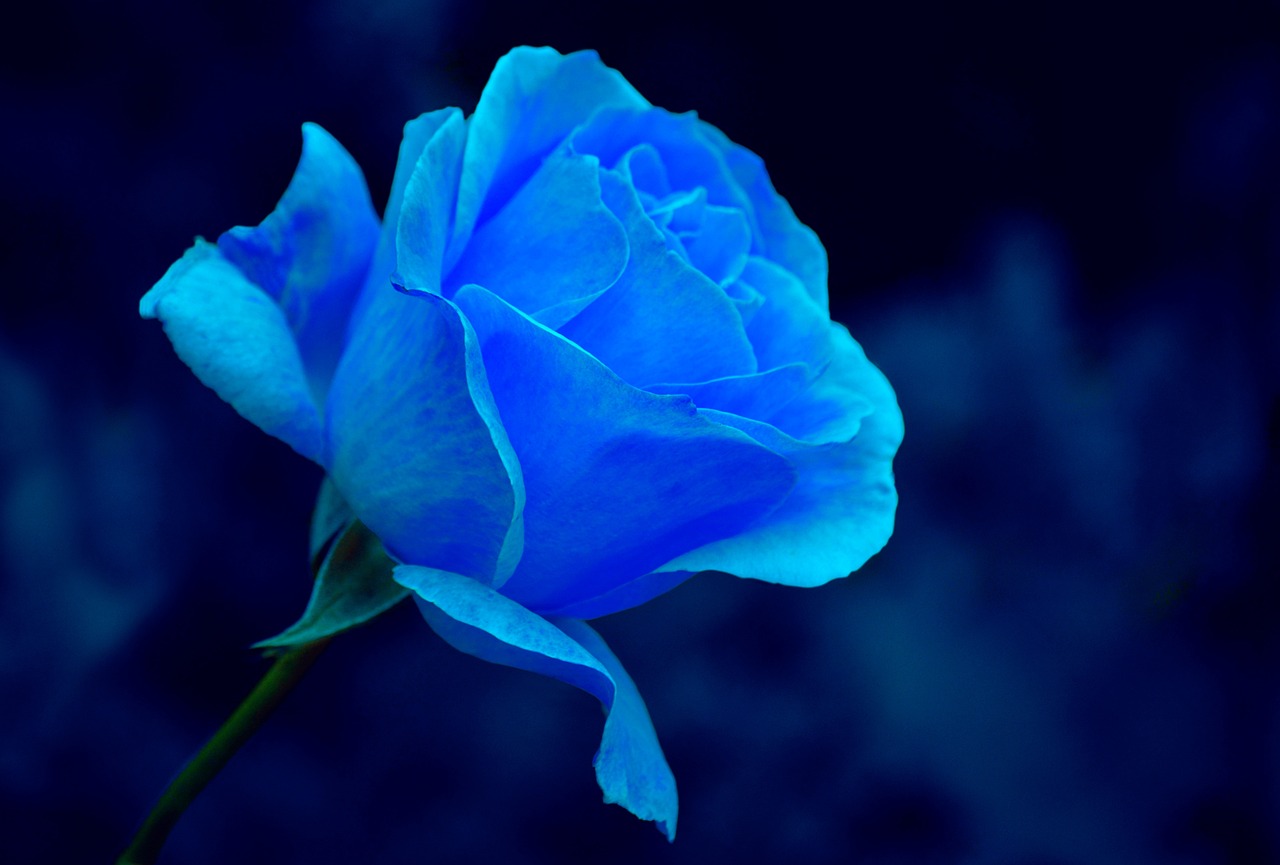
The Psychology of Color
Color is not just a visual element; it’s a powerful tool that can stir emotions and shape perceptions. Think about it: when you see a bright yellow sun, doesn’t it instantly make you feel happy? Or when you encounter deep blue waters, doesn’t it evoke a sense of calm? This is the psychology of color at work. Artists have long understood that different colors can elicit specific feelings, and they often use this knowledge to enhance the emotional resonance of their work.
For instance, warm colors like red, orange, and yellow are often associated with energy, passion, and excitement. They can stimulate the senses and even increase heart rates. On the other hand, cool colors such as blue, green, and purple tend to have a soothing effect, promoting tranquility and relaxation. This dichotomy can be likened to the difference between a roaring fire and a gentle breeze—both are beautiful in their own right, but they evoke very different feelings.
Understanding these emotional responses is crucial for artists. By choosing specific colors, they can guide the viewer's emotional journey through their artwork. For example, a painting dominated by reds and oranges might be intended to convey a sense of urgency or chaos, while one filled with blues and greens could be aiming for serenity and peace. This intentional use of color can transform a simple visual experience into a profound emotional one.
Moreover, the effects of color can vary significantly across different cultures. In some societies, white represents purity and peace, while in others, it symbolizes mourning and loss. This cultural context adds another layer of complexity to the psychology of color. Artists who are aware of these cultural connotations can create works that resonate more deeply with their intended audience, bridging gaps and fostering connections.
To illustrate the psychological impact of color further, consider the following table that summarizes common colors and their associated emotional responses:
| Color | Emotional Response |
|---|---|
| Red | Passion, Energy, Anger |
| Blue | Calm, Trust, Sadness |
| Yellow | Happiness, Optimism, Caution |
| Green | Growth, Harmony, Freshness |
| Purple | Luxury, Creativity, Mystery |
As artists delve deeper into the psychology of color, they can experiment with combinations and contrasts to create a more dynamic emotional landscape. For example, a piece that juxtaposes warm and cool colors can create tension and intrigue, drawing the viewer in and encouraging them to explore the narrative behind the artwork. This interplay of colors can be likened to a conversation—each color has its voice, and together they create a rich dialogue that resonates with the audience.
In summary, the psychology of color is an intricate dance of emotion and perception. Artists who wield this knowledge effectively can create works that not only capture the eye but also touch the heart. So, the next time you find yourself gazing at a piece of art, take a moment to consider the colors at play and the feelings they evoke. You might just discover a deeper connection to the artwork and the artist's intent.
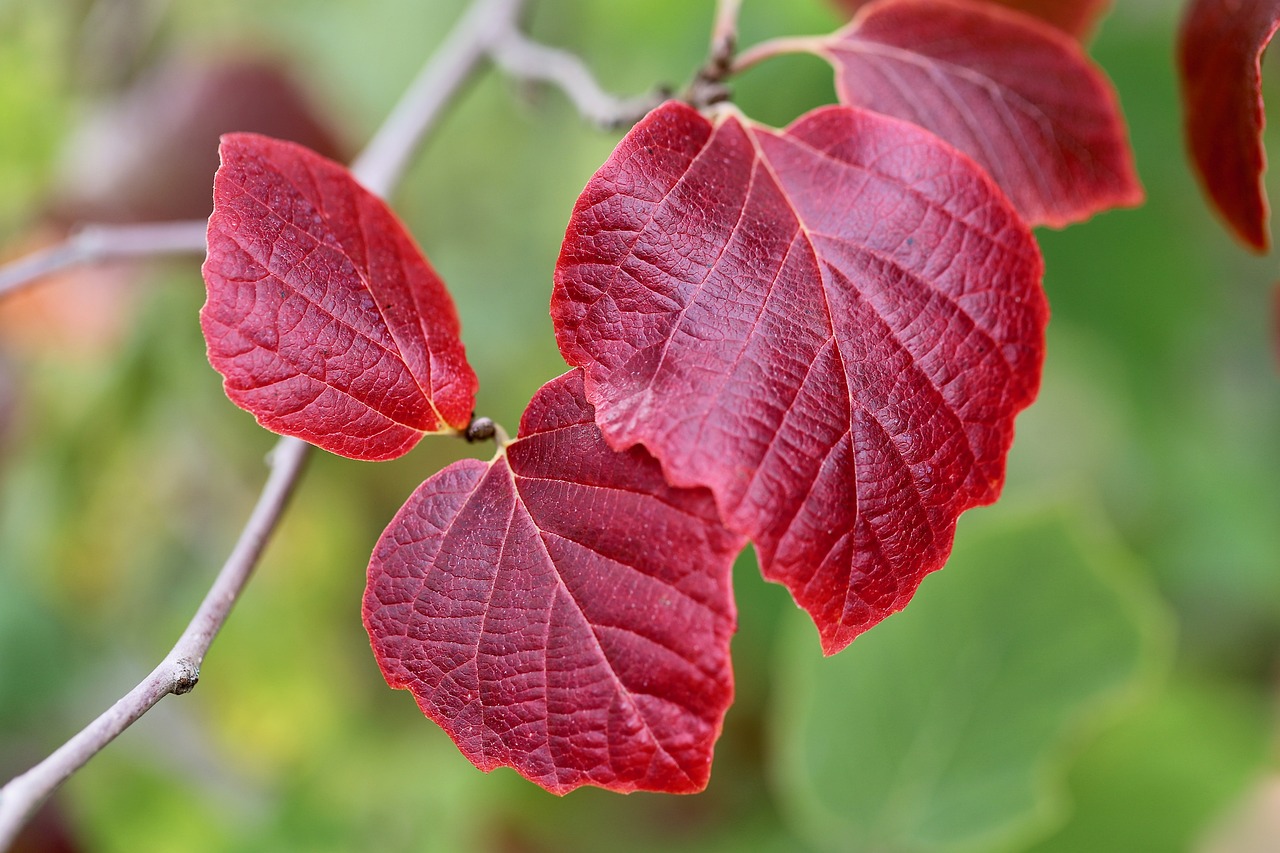
Color Theory Basics
Color theory is the backbone of artistic expression, serving as a crucial guide for artists to understand how to mix and match colors effectively. At its core, color theory outlines the relationships between colors and provides a framework for creating visually appealing and harmonious artwork. Think of it as the rules of a game; when you know the rules, you can play creatively within them. Artists leverage these principles to evoke emotions, set moods, and convey messages, making color not just a visual element, but a powerful tool for storytelling.
To grasp the fundamentals of color theory, it's essential to understand the categories of colors that make up the color wheel. The wheel is divided into three primary categories: primary colors, secondary colors, and tertiary colors. Each category plays a significant role in the creation of vibrant artwork.
| Type of Color | Examples | Mixing Information |
|---|---|---|
| Primary Colors | Red, Blue, Yellow | Cannot be created by mixing other colors. |
| Secondary Colors | Green, Orange, Purple | Created by mixing two primary colors. |
| Tertiary Colors | Red-Orange, Yellow-Green, Blue-Purple | Created by mixing a primary color with a secondary color. |
Each color category interacts with others to create a spectrum of hues that artists can utilize. For instance, when you mix the primary colors, you get secondary colors, which then combine with the primary colors to yield tertiary colors. This blending of colors can lead to an infinite array of shades and tones, allowing for endless creativity. Imagine the color wheel as a vibrant garden where each flower represents a different hue, waiting to be picked and combined to create a stunning bouquet of art.
Understanding complementary colors is another essential aspect of color theory. These are colors that sit opposite each other on the color wheel, such as red and green or blue and orange. When placed side by side, complementary colors create a striking contrast that can draw the viewer's eye and add dynamic tension to a composition. It's like a dance where two partners, though different, move together to create visual harmony.
On the other side of the spectrum, we have analogous colors, which sit next to each other on the color wheel, such as blue, blue-green, and green. These colors create a sense of unity and cohesion, often evoking feelings of calmness and serenity. Think of them as a family of colors that harmonize beautifully, much like a well-tuned orchestra playing in perfect synchrony.
In essence, color theory is not just about mixing paints; it's about understanding the emotional and psychological impact of colors and how they can be used to communicate deeper meanings in art. Whether you're a budding artist or a seasoned professional, grasping these concepts can significantly enhance your ability to create impactful and resonant works of art.
- What are primary colors? Primary colors are the base colors that cannot be created by mixing other colors. They include red, blue, and yellow.
- How do complementary colors work? Complementary colors are opposite each other on the color wheel and create a strong contrast when used together, enhancing visual interest.
- What is the significance of analogous colors? Analogous colors are next to each other on the color wheel and create harmony and unity in artwork, often evoking a sense of tranquility.
- Why is color theory important for artists? Color theory helps artists understand how to effectively use color to convey emotions, create depth, and enhance the overall composition of their work.

Primary, Secondary, and Tertiary Colors
Understanding is essential for any artist looking to create vibrant and balanced artwork. At the core of color theory, these categories form the foundation of how we perceive and utilize color in our creations. Let's break it down:
Primary colors are the building blocks of all other colors. They cannot be created by mixing other colors together. In traditional color theory, the primary colors are red, blue, and yellow. These colors are the starting point for mixing and creating a wide range of hues. Imagine them as the essential ingredients in a recipe—without them, you can't make the dish!
Next, we have secondary colors, which are formed by mixing two primary colors together. The secondary colors include green (blue + yellow), orange (red + yellow), and purple (red + blue). Think of secondary colors as the delicious blends that emerge when you combine those primary ingredients. They add depth and variety to your palette, allowing for a richer artistic expression.
Then come the tertiary colors, which are created by mixing a primary color with a secondary color. This results in colors like red-orange, yellow-green, blue-green, and so on. Tertiary colors are like the delightful spices that enhance the flavor of your dish, providing nuances that can evoke different feelings and atmospheres in your artwork.
| Color Category | Colors | Mixing Method |
|---|---|---|
| Primary | Red, Blue, Yellow | Cannot be created by mixing |
| Secondary | Green, Orange, Purple | Mixing two primary colors |
| Tertiary | Red-Orange, Yellow-Green, Blue-Green | Mixing a primary color with a secondary color |
By understanding these color categories, artists can create harmonious compositions that resonate with viewers. Whether you’re painting a serene landscape or an energetic abstract piece, the right combination of primary, secondary, and tertiary colors can make all the difference. So, the next time you pick up that brush, remember the power of color and how it can transform your art into something truly captivating!
- What are the primary colors? The primary colors are red, blue, and yellow. They cannot be created by mixing other colors.
- How are secondary colors formed? Secondary colors are formed by mixing two primary colors together.
- What are some examples of tertiary colors? Examples include red-orange, yellow-green, and blue-green, which are created by mixing a primary color with a secondary color.
- Why is understanding color important for artists? Understanding color helps artists convey emotions and messages more effectively, enhancing the overall impact of their artwork.
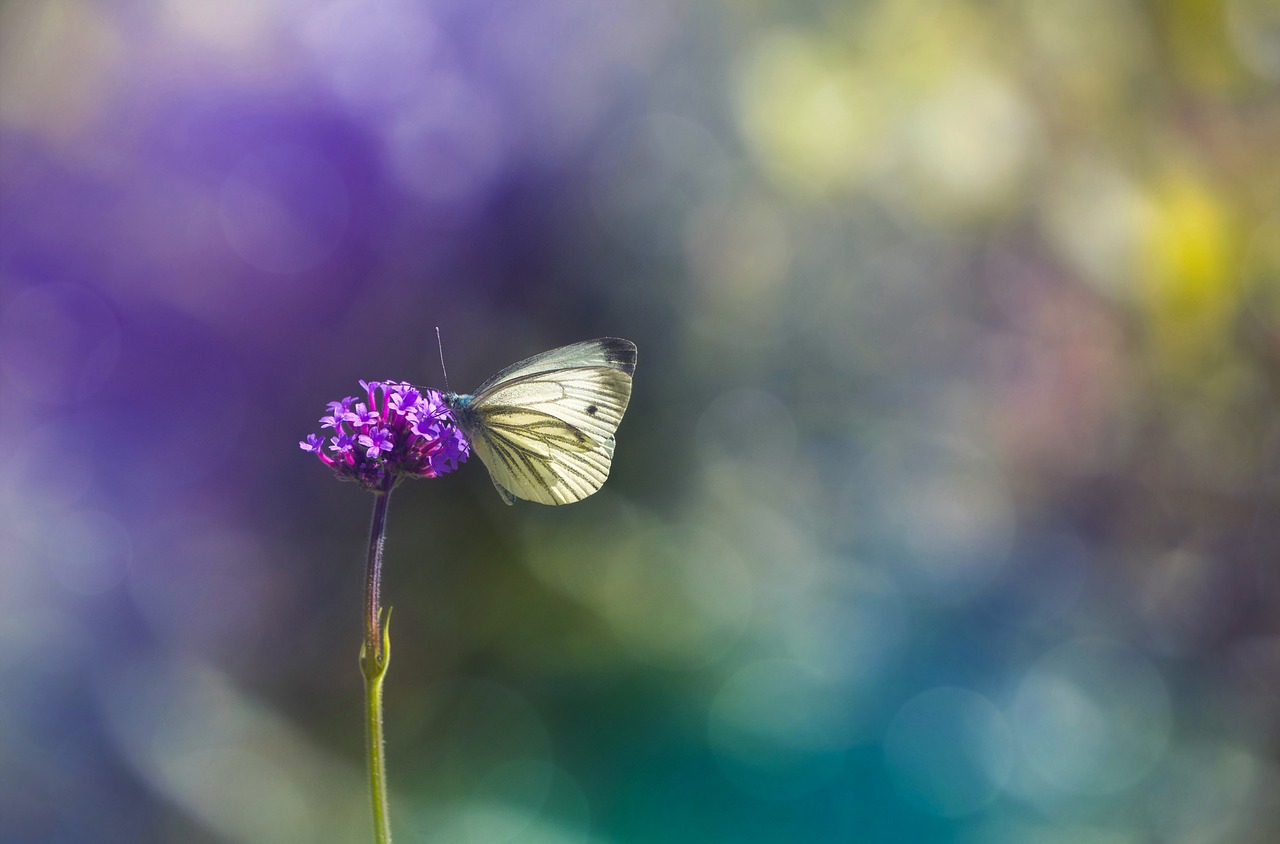
Complementary Colors
Complementary colors are a fascinating aspect of color theory that can dramatically influence the visual impact of artwork. These colors sit directly opposite each other on the color wheel, creating a striking contrast that can evoke strong emotions and grab the viewer's attention. Think of it as a dance between two opposing forces; when they come together, they create a dynamic tension that can make a piece of art truly captivating. For instance, pairing vibrant red with a deep green can create a stunning visual experience that draws the eye and keeps it engaged.
One of the most compelling reasons artists utilize complementary colors is their ability to enhance each other’s brightness. When placed side by side, these colors can appear more vivid than when used in isolation. This phenomenon is often referred to as color vibration, where the juxtaposition of complementary hues creates an optical effect that can make the artwork feel alive. Imagine a sunset painted with oranges and blues; the interplay of these complementary colors can evoke feelings of warmth and tranquility, inviting the viewer into the scene.
Moreover, artists can use complementary colors to guide the viewer’s focus within the composition. By strategically placing these colors in key areas of the artwork, they can lead the eye to important elements, creating a natural flow that enhances storytelling. For example, a painter might use a bright yellow to highlight a character's face set against a deep purple background, drawing immediate attention to the subject while also establishing a mood of contrast and intrigue.
To illustrate the concept of complementary colors further, consider the following table that outlines common pairs:
| Color | Complementary Color |
|---|---|
| Red | Green |
| Blue | Orange |
| Yellow | Purple |
It's also essential to note that the emotional impact of complementary colors can vary across different cultures and contexts. For instance, while red and green might symbolize festivity in some cultures, in others, they could represent opposing forces or even conflict. This cultural dimension adds another layer of complexity to how artists can use complementary colors to communicate their messages.
In summary, understanding and effectively using complementary colors can significantly elevate an artist's work. By harnessing the power of contrast, artists can create visually stunning pieces that resonate on both aesthetic and emotional levels. So, the next time you pick up a brush or pencil, consider how the colors you choose can interact to tell a more profound story—after all, art is not just about what you see, but also about how it makes you feel.
- What are complementary colors? Complementary colors are pairs of colors that are located opposite each other on the color wheel, creating a strong contrast when used together.
- How do complementary colors affect artwork? They enhance each other's brightness, create visual tension, and guide the viewer's focus within the composition.
- Can the meaning of complementary colors change based on culture? Yes, the emotional and symbolic meanings of colors can vary significantly across different cultures.
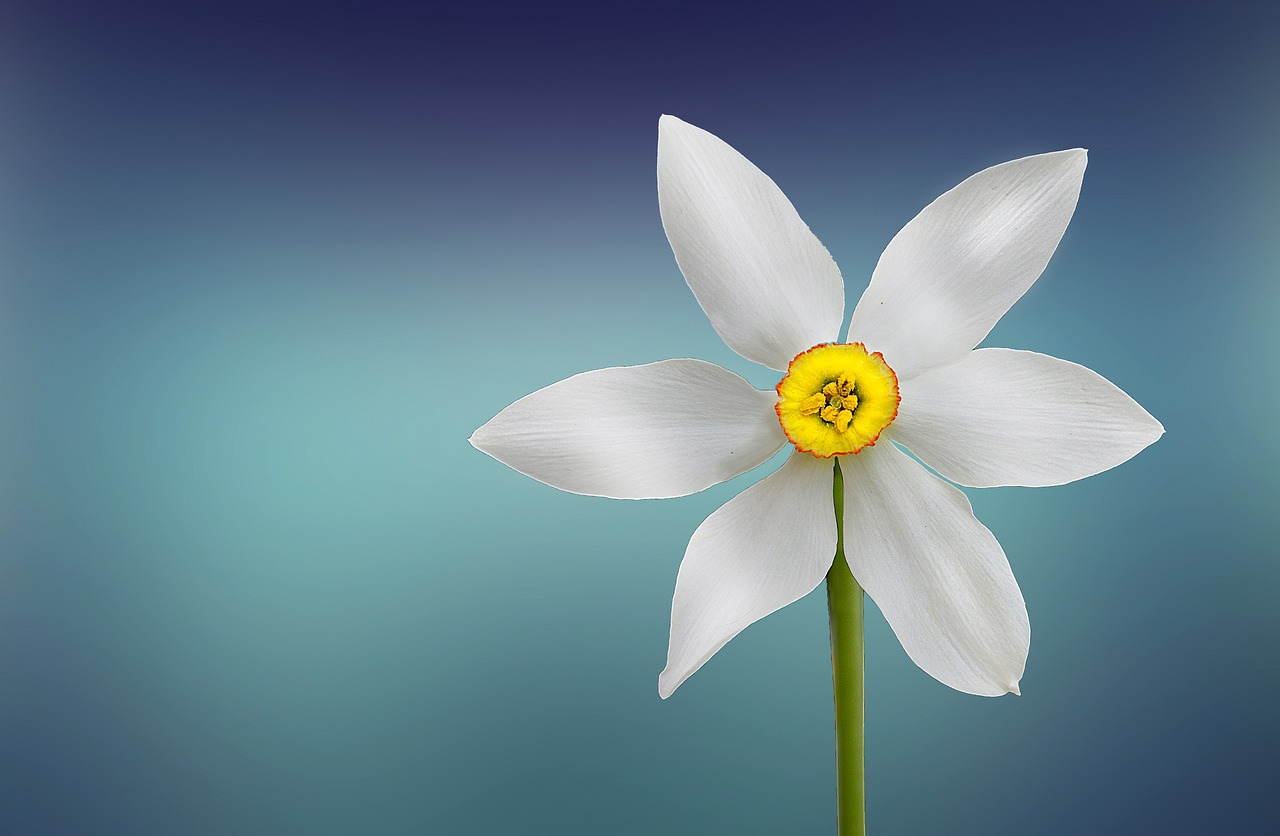
Analogous Colors
Analogous colors are the delightful trio of hues that sit side by side on the color wheel. Think of them as best friends in the world of art, working together to create a sense of harmony and unity in a composition. When an artist chooses to use analogous colors, they are essentially inviting a gentle, soothing vibe into their artwork. For instance, if you take a look at blue, green, and yellow, these colors blend seamlessly, evoking feelings of tranquility and peace. This is why you often see analogous colors in nature, where they effortlessly coexist, such as in a sunset where warm oranges and cool purples mingle.
One of the most fascinating aspects of analogous colors is their ability to guide the viewer's eye throughout the piece. When used thoughtfully, they can create a flow that feels both natural and engaging. Imagine walking through a lush garden filled with varying shades of green, accented by bursts of yellow and hints of blue. It feels cohesive, right? That’s the magic of using analogous colors!
Artists often employ this technique to evoke specific emotions or to convey a certain atmosphere. For example, a painter might choose a palette of warm reds, oranges, and yellows to create a sense of warmth and energy, reminiscent of a cozy autumn day. Conversely, a selection of cool greens, blues, and purples might be used to depict a serene, calming scene, like a tranquil lake at dusk.
To effectively utilize analogous colors, artists should consider the following:
- Choose a Dominant Color: Select one color to dominate the composition, allowing the others to support and enhance it.
- Vary the Shades: Use different shades and tints of the chosen colors to add depth and interest.
- Consider the Mood: Think about the emotional response you want to evoke and select your colors accordingly.
In summary, analogous colors are a powerful tool in an artist's arsenal. They not only create visual harmony but also help in establishing a mood that resonates with viewers. By understanding how to effectively use these colors, artists can elevate their work, making it not just a feast for the eyes, but also a rich emotional experience for the soul.
- What are analogous colors? Analogous colors are groups of three colors that are next to each other on the color wheel, creating a harmonious look.
- How do I choose analogous colors for my artwork? Select one dominant color and choose two adjacent colors on the color wheel to create a balanced palette.
- Can I use more than three analogous colors? While three is the traditional choice, you can experiment with more colors, but be cautious to maintain harmony.
- What emotions do analogous colors evoke? Depending on the colors chosen, they can evoke a range of emotions from calmness to warmth and energy.

Color in Different Cultures
Colors are not just visual stimuli; they are powerful symbols that carry deep meanings across various cultures. Each hue resonates with unique emotions and beliefs, shaping our perceptions and experiences. For instance, in Western cultures, white is often associated with purity and innocence, commonly seen in weddings. However, in many Eastern cultures, particularly in China, white symbolizes mourning and is traditionally worn at funerals. This stark contrast illustrates how the same color can evoke entirely different sentiments depending on cultural context.
Moreover, colors can represent broader concepts such as luck, prosperity, and spirituality. For example, red is a vibrant color that signifies good fortune in Chinese culture, often used in celebrations like the Lunar New Year. Conversely, in certain African cultures, red may symbolize danger or sacrifice. This cultural divergence highlights the importance of understanding color symbolism when creating art intended for diverse audiences.
Artists often draw inspiration from these cultural interpretations of color to enrich their narratives. By incorporating culturally significant colors, they can connect with viewers on a deeper emotional level. For instance, an artist might use blue to evoke feelings of tranquility or sadness, drawing on its associations with both the sky and the sea. In Hindu culture, blue is frequently linked to the divine, representing the god Krishna. Such layers of meaning can transform a piece of art from a simple visual to a profound commentary on life and beliefs.
To further illustrate the significance of color across cultures, consider the following table that outlines some common colors and their meanings in various cultural contexts:
| Color | Western Meaning | Eastern Meaning | African Meaning |
|---|---|---|---|
| Red | Passion, Love | Good Fortune | Danger, Sacrifice |
| White | Purity, Innocence | Mourning | Purity |
| Blue | Calm, Sadness | Divinity | Peace |
| Green | Growth, Nature | Fertility | Prosperity |
As we delve deeper into the world of color, it becomes evident that these interpretations are not static; they evolve with time and societal changes. Artists and creators who are aware of these nuances can craft pieces that not only resonate with their immediate audience but also transcend cultural barriers. In a world that is increasingly interconnected, understanding the role of color in different cultures is more important than ever. It allows artists to tell stories that are rich in meaning, inviting viewers to explore and reflect on their own experiences and beliefs.
- What does the color red symbolize in different cultures?
In many cultures, red symbolizes love and passion in the West, good fortune in China, and danger in some African cultures. - Why is color important in art?
Color can evoke emotions, convey messages, and enhance the overall impact of a piece, making it a vital element in artistic expression. - How can understanding color symbolism improve my artwork?
By understanding color symbolism, artists can create more meaningful works that resonate with a broader audience, enriching their narratives.
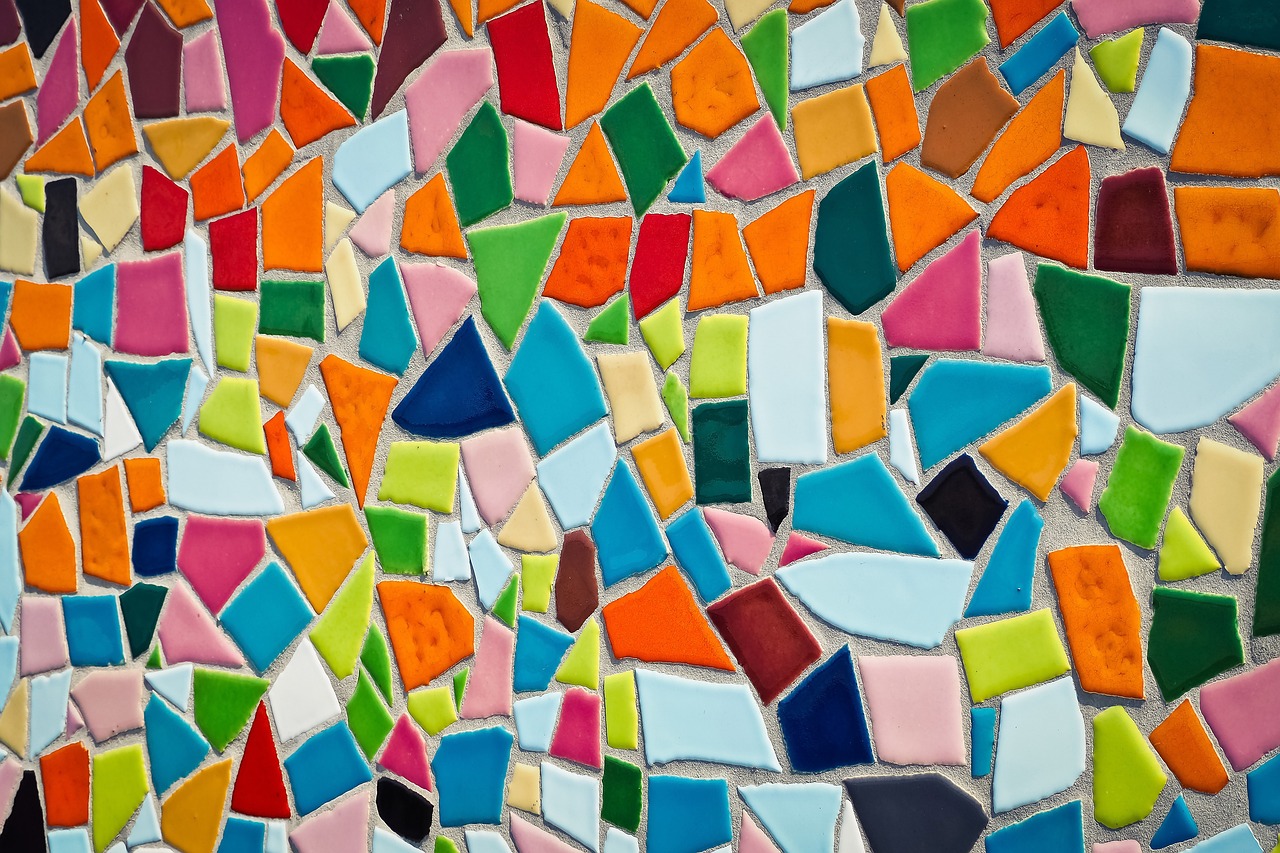
Historical Perspectives on Color
Throughout the vast tapestry of art history, the use of color has undergone significant transformations, reflecting the evolving societal values, technological advancements, and cultural contexts of different eras. From the rich, symbolic hues of ancient civilizations to the vibrant palettes of modern art, color has served not just as a tool for aesthetic pleasure but also as a powerful medium for communication and expression.
In the ancient world, colors were often imbued with deep meanings. For example, in Egyptian art, the color blue symbolized the heavens and the divine, while red represented chaos and disorder. Artists meticulously selected their colors to convey messages that went beyond mere decoration. This practice laid the groundwork for how color would be perceived and used in subsequent periods.
Fast forward to the Renaissance era, where artists like Titian and Raphael revolutionized color usage. They didn't just apply color for decorative purposes; they employed it to create depth, emotion, and narrative. The introduction of oil paints allowed for greater vibrancy and subtlety, enabling artists to explore a wider range of hues and techniques. The use of chiaroscuro (the treatment of light and shadow) became a hallmark of this period, enhancing the three-dimensionality of their subjects and inviting viewers into a more immersive experience.
As we journey into the 19th century, we encounter the Impressionist movement, which marked a radical departure from traditional color application. Artists like Claude Monet and Pierre-Auguste Renoir began using pure, unmixed colors directly from the tube, applying them in quick, expressive strokes. This approach allowed them to capture the fleeting effects of light and atmosphere, resulting in artworks that pulsated with life and energy. The Impressionists challenged the conventions of their time, emphasizing the importance of perception and experience over realistic representation.
To better understand the evolution of color in art history, let’s take a look at a brief overview of key movements and their relationship with color:
| Art Movement | Color Usage | Key Artists |
|---|---|---|
| Ancient Egypt | Symbolic and meaningful colors | Unknown |
| Renaissance | Realistic and emotive color application | Titian, Raphael |
| Impressionism | Pure, unmixed colors to capture light | Monet, Renoir |
| Modern Art | Experimental use of color | Pablo Picasso, Wassily Kandinsky |
In the realm of modern art, color took on even more experimental forms. Artists like Pablo Picasso and Wassily Kandinsky pushed the boundaries of color theory, exploring abstraction and emotional resonance. Kandinsky, in particular, believed that colors could evoke specific feelings and even correspond to musical notes, creating a synesthetic experience for the viewer. This experimentation paved the way for future movements, such as Fauvism and Abstract Expressionism, where color became a primary means of expression, often used independently of form and subject matter.
In conclusion, the historical perspectives on color reveal its profound impact on artistic expression and viewer perception. From the symbolism of ancient times to the innovative techniques of modern artists, color remains a vital element in the narrative of art. As we continue to explore and understand these historical contexts, we not only appreciate the beauty of color but also its ability to convey complex emotions and ideas that resonate across cultures and time.
- What is the significance of color in art? Color plays a crucial role in conveying emotions, creating atmosphere, and enhancing the overall impact of a piece of art.
- How has the use of color changed over time? The use of color has evolved significantly, reflecting changes in societal values, technological advancements, and artistic movements.
- What are complementary and analogous colors? Complementary colors are opposite each other on the color wheel, creating contrast, while analogous colors are next to each other, promoting harmony.

Renaissance Color Usage
The Renaissance period, spanning roughly from the 14th to the 17th century, was a transformative era in art history, marked by a profound exploration of color and its usage. Artists of this time began to move away from the flat, muted tones of the medieval period, embracing a more vibrant and realistic palette that mirrored the natural world. This shift was not merely aesthetic; it was deeply intertwined with the burgeoning humanism of the era, which emphasized the importance of individual experience and emotion.
One of the most significant advancements in color usage during the Renaissance was the development of oil paint. Unlike tempera, which dried quickly and limited the artist's ability to blend colors, oil paint allowed for greater manipulation and layering. Artists like Leonardo da Vinci and Titian utilized this medium to create rich, luminous colors that could convey depth and texture. Da Vinci, in particular, mastered the technique of sfumato, which involved the delicate blending of colors and tones to create soft transitions, enhancing the three-dimensionality of his subjects.
Moreover, color symbolism became increasingly important during the Renaissance. Each hue carried specific meanings, which artists skillfully incorporated into their works. For instance, blue often represented divinity, while red was associated with passion and love. This use of color not only added emotional depth to the artwork but also communicated complex narratives. Artists like Raphael and Michelangelo employed these color codes to guide viewers through their compositions, ensuring that the emotional and spiritual messages were clear and impactful.
To illustrate the evolution of color usage during the Renaissance, consider the following table that highlights key artists and their distinctive approaches:
| Artist | Technique | Notable Works |
|---|---|---|
| Leonardo da Vinci | Sfumato | Mona Lisa, The Virgin of the Rocks |
| Raphael | Color Symbolism | The School of Athens, The Sistine Madonna |
| Titian | Layering Techniques | Assumption of the Virgin, Venus of Urbino |
In addition to these advancements, the Renaissance also saw a fascination with the natural world, prompting artists to observe and replicate the colors found in nature more accurately. This emphasis on realism led to the study of light and shadow, which further enhanced the vibrancy of colors used in paintings. The interplay of light and color became a crucial element in creating mood and atmosphere, a practice that would influence countless generations of artists.
In essence, the Renaissance was a pivotal moment for color in art, characterized by innovation, emotional expression, and a deeper understanding of the world. The techniques and theories developed during this period laid the groundwork for future movements, solidifying color's role as a fundamental aspect of artistic expression. As we continue to explore the significance of color in art, it's essential to recognize the profound impact of the Renaissance and its lasting legacy.
- What was the main innovation in color usage during the Renaissance? The main innovation was the use of oil paint, which allowed for greater blending and layering of colors.
- How did artists use color symbolism in their work? Artists incorporated specific meanings into colors, such as blue for divinity and red for passion, to convey deeper emotional and narrative content.
- Which techniques did Renaissance artists use to enhance realism? Techniques like sfumato and the study of light and shadow were crucial in creating realistic and vibrant artworks.

Impressionism and Color Innovation
The Impressionist movement, which blossomed in the late 19th century, marked a revolutionary shift in the way artists approached color and light. Unlike their predecessors, who often relied on traditional methods and a limited palette, Impressionist artists embraced the idea of using pure, unmixed colors to capture the essence of a moment. This technique was not just about aesthetics; it was a profound statement about perception and the fleeting nature of reality. Think about it: when you glance at a beautiful sunset, the colors blend and swirl in your mind, creating a vivid tapestry of experiences. That’s precisely what Impressionists aimed to replicate on canvas.
One of the most fascinating aspects of Impressionism is how these artists broke free from the constraints of formal color theory. They experimented with color juxtaposition, placing complementary colors side by side to create a vibrant, shimmering effect. This technique not only enhanced the visual impact of their work but also transformed how light was represented. By applying small dabs of color directly onto the canvas, they allowed the viewer's eye to blend these hues from a distance, much like how we perceive colors in nature. This method created an illusion of light that was both dynamic and captivating.
For instance, Claude Monet's iconic painting, "Impression, Sunrise," serves as a perfect example of this innovative approach. The way he used blues, oranges, and yellows to depict the sun reflecting off the water is nothing short of magical. Rather than meticulously blending the colors, Monet applied them in quick, short strokes that captured the essence of the moment. This spontaneity added an element of excitement and energy to his work, inviting viewers to experience the scene as if they were standing right there beside him.
Moreover, Impressionism was not just about individual expression; it also opened the door to a new understanding of color in relation to the environment. Artists like Pierre-Auguste Renoir and Edgar Degas explored how colors change based on light and atmosphere. They painted outdoor scenes filled with vibrant colors that shifted with the time of day and weather conditions. This exploration of natural light and its effects on color became a defining characteristic of the movement, pushing the boundaries of artistic expression.
To further illustrate the impact of color innovation during the Impressionist era, let’s look at a comparison of traditional versus Impressionist techniques:
| Aspect | Traditional Techniques | Impressionist Techniques |
|---|---|---|
| Color Mixing | Primarily blended on palette | Applied directly on canvas |
| Light Representation | Uniform and controlled | Dynamic and fleeting |
| Brushwork | Smooth and detailed | Loose and expressive |
| Subject Matter | Historical and mythological | Everyday life and nature |
In summary, the Impressionist movement's approach to color was nothing short of revolutionary. By challenging the established norms and experimenting with light and color, these artists paved the way for future movements and changed the course of art history. Their legacy continues to inspire artists today, reminding us that sometimes, the most profound expressions come from the simplest observations of the world around us.
- What is Impressionism? Impressionism is an art movement that originated in France in the late 19th century, characterized by a focus on capturing light and its changing qualities through the use of vibrant colors and loose brushwork.
- Who were the key figures in Impressionism? Key figures include Claude Monet, Pierre-Auguste Renoir, Edgar Degas, and Camille Pissarro, among others.
- How did Impressionists use color differently? Impressionists used pure, unmixed colors applied directly to the canvas, often in short strokes, to create a sense of light and movement, rather than blending colors on a palette.
- What impact did Impressionism have on modern art? Impressionism broke away from traditional art forms and influenced many subsequent movements, including Post-Impressionism, Fauvism, and Abstract art, by encouraging experimentation with color and form.
Frequently Asked Questions
- What is the psychological impact of color in art?
Color plays a crucial role in evoking emotions and influencing moods. Different colors can stir feelings of happiness, sadness, anger, or calmness. For instance, warm colors like red and orange can create excitement, while cool colors like blue and green often evoke tranquility. Artists leverage this psychological impact to convey specific feelings and messages in their work, making color a powerful tool in artistic expression.
- Can you explain the basics of color theory?
Absolutely! Color theory is all about understanding how colors mix and interact with each other. It includes the primary colors (red, blue, yellow), secondary colors (green, orange, purple), and tertiary colors, which are created by mixing primary and secondary colors. Mastering color theory helps artists create harmonious palettes and visually appealing compositions, ensuring that their artwork resonates with viewers.
- What are complementary colors, and why are they important?
Complementary colors are those that sit opposite each other on the color wheel, such as blue and orange or red and green. The contrast between these colors creates visual tension, which can enhance the overall impact of a piece. Artists often use complementary colors to make certain elements pop, drawing the viewer's eye and adding depth to their work.
- How do analogous colors contribute to artwork?
Analogous colors are located next to each other on the color wheel, like blue, blue-green, and green. These colors create a sense of harmony and unity in artwork, often resulting in serene and cohesive compositions. Artists use analogous colors to evoke specific moods and feelings, making their pieces more inviting and emotionally engaging.
- What significance do colors hold in different cultures?
Colors can have vastly different meanings across cultures. For example, while white symbolizes purity in many Western cultures, it may represent mourning in some Eastern cultures. By understanding these cultural variations, artists can connect with their audience on a deeper level, enriching their narratives and making their work more relatable to diverse viewers.
- How has the use of color evolved throughout art history?
Throughout history, the use of color in art has evolved significantly, reflecting societal values and technological advancements. During the Renaissance, for example, artists like Titian and Raphael used color symbolically and realistically to enhance depth and emotion. In contrast, Impressionist artists broke traditional rules by using pure, unmixed colors to capture light and atmosphere, paving the way for modern art movements.
- What role did color play in the Impressionist movement?
The Impressionist movement revolutionized color application by emphasizing the use of pure, unmixed colors. Artists like Monet and Renoir focused on capturing the effects of light and atmosphere, often painting en plein air (outdoors) to observe how colors changed in natural light. This innovative approach significantly influenced modern art, encouraging artists to explore new ways to express their vision through color.



















